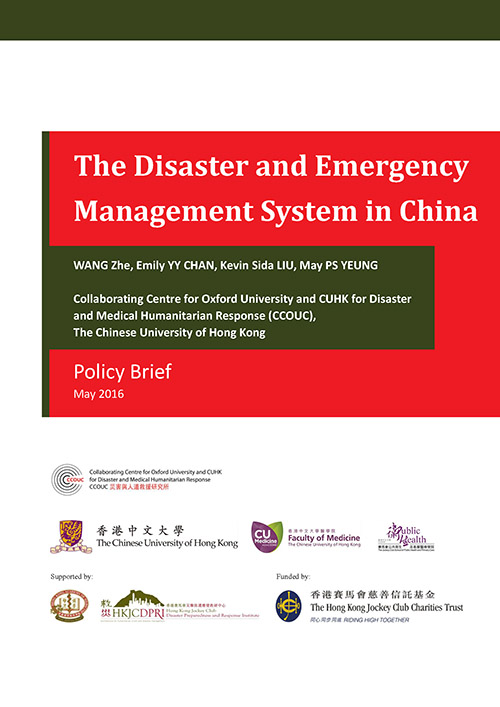You are here
Policy Brief - The Disaster and Emergency Management System in China
Policy Brief - The Disaster and Emergency Management System in China
The SARS epidemic in 2003 was the trigger leading to a reform of China’s emergency management system. In 2007, the Chinese government adopted and enacted the “Emergency Response Law of the People's Republic of China”. The purpose of this law is to prevent and reduce the occurrence of emergencies, control, mitigate and eliminate the serious social harm caused by emergencies, regulating activities in response to emergencies, protecting the lives and property of the people, and maintaining national security, public security, environmental safety and public order. Following the restructuring of the emergency management system, the public health emergency management system has consequently undergone a significant change.
This policy brief outlines the emergency management system by the China government; analysing its strengths and weaknesses, and recommends options for improvement. It discusses the “One Planning Plus Three Systems” Framework, namely the Emergency Response Plan, Emergency Legislation System, Emergency Institutional System and the Emergency Regulatory System. These comprehensive systems and contingency plans would lead to an integrated response during emergencies. However, most of the plans focus on emergency response upon an event, rather than pre-disaster preparedness and post-disaster recovery. The authors recommend setting up a department to coordinate work within the government during all phases of the disaster cycle. It is also recommended to establish a set of unified information standards and emergency terminological system and to develop and disseminate risk communication guidelines to improve the overall risk communication system. Acknowledgment and engagement of relevant stakeholders by clearly assigning defined functions in contingency planning can enhance community participation to build up community resilience.
The full version of this policy brief can be downloaded in this page. If you have any thoughts about this policy brief, you can enter our discussion platform to initiate or participate in the discussion. If you have not registered in our e-learning platform before, please click here to create a new account.




